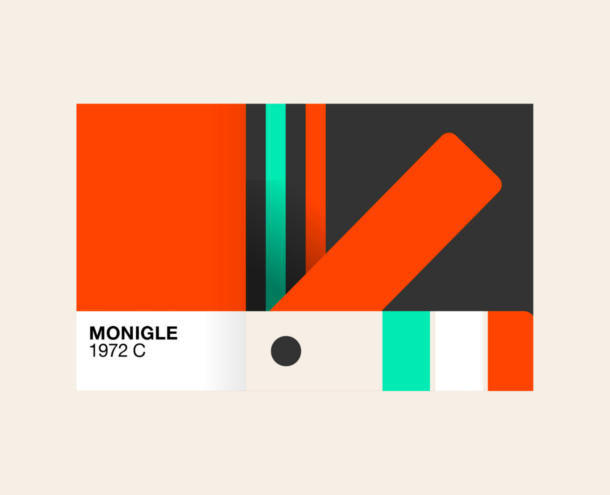From identification to experience: The brand expression building blocks

This article is part 1 of a 3-part series on Brand Expression. View the full series here.
When you think of a brand’s experience, what comes to mind? Their logo? Their color palette? The images and fonts they use? While all these elements are integral parts of a brand’s experience, they are merely pieces of a visual ecosystem.
Separately, they help customers identify, remember, and recognize a brand. But together, they define a core piece of the sensorial experience that differentiates your brand from your competitors.
Establishing a brand expression was once considered a sum of its parts – a collection, if you will, of matching visual assets. But today, a brand’s experience is tasked with so much more than recognition. Every visual aspect of your brand, from online to physical, needs to evoke emotions and clearly convey your brand’s values and mission to your audience.
Creating a strong expression has the power to shift consumer perceptions, ultimately, influencing their purchasing decisions and winning their loyalty.
The core elements of a brand’s experience
Consider a bouquet of flowers in a vase. If someone knocked over the bouquet and all the flowers were spread individually, it would lose the harmony that makes it beautiful and unique. Only when all the individual elements come together does the bouquet’s singularity take shape.
Think of your expression as an amalgamation of key components that come together to create your brand’s experience.
1. Logo

Your logo serves as the “handshake” that forms people’s initial impressions of your company. It’s the first thing people often associate with a brand and accompanies almost all marketing materials.
Every element of a logo should influence how a customer feels and experiences your brand. The colors, fonts, shapes, and overall composition should evoke the personality and character of your brand, serving as a visual representation of the values and identity your brand encompasses.
2. Color palette

Colors have a unique way of evoking emotion. A cool color like blue can be associated with calmness and serenity while a warm color like red might cause excitement and passion.
Brands use color as a tool for evoking the desired emotions within their customers, such as trust, desire, or peace.
3. Typography

Typography refers to the style, arrangement, and appearance of text. Choosing a font that fits with your brand’s voice is critical for successful visual communication. For example, if you’re a technology brand, you may choose more modern and futuristic fonts to convey the progressiveness of your product, whereas if you’re a healthcare company, you may opt for a more calming Serif font to convey calmness, trust, and reliability.
4. Imagery and photography style

While you should be using a variety of images and photography across your various brand assets, it’s important to define a consistent and overarching look and feel for your graphics.
Leverage your brand story to inform how your visual elements will be arranged. Will they set a dark and serious tone or a more lighthearted and colorful journey? The answers will guide your lighting choices, the props you use, the angles you shoot from, and the way people and products are portrayed.
5. Iconography

Icons and symbols are frequently used to guide users to action on digital assets such as your website and mobile app.
Simplicity and legibility is key for determining your iconography. Determine consistent guidelines for your icons such as line thickness, corner radius, color, and spacing. Not only is consistency important for brand recognition and your overarching digital aesthetic, but these subtle yet powerful elements also tell a story about what matters most to your brand.
6. Layout and design principles

Your layout and design principles serve as the foundation that elements such as typography, color, and iconography will be built upon. It’s a set of guidelines that provide a scaffolding for visual elements to come together to tell a holistic story.
French composer Clause Debussy was famously quoted as saying “Music is the space between the notes” and your layout and design principles will work the same way. These principles guide the arrangement of visual elements to communicate who your brand is to the world. They include aspects such as balance, contrast, emphasis, proportion, hierarchy, repetition, rhythm, pattern, white space, and movement.
7. Brand guidelines

Brand guidelines, also known as a brand style guide or brand book, are crucial for maintaining a consistent and powerful brand expression. They provide a detailed framework for how the brand should be presented across different mediums and platforms, ensuring that every aspect of the brand’s communication aligns with its image, values, and objectives.
The brand guidelines outline specific details such as the brand’s color palette, typography, logo usage, imagery, and tone of voice. Your brand guidelines have the power to convert employees into brand advocates, pumping your unified brand message into the world daily.
Brand experience: Beyond a sum of its parts
Just like a puzzle piece means very little without the context of its full picture, individual elements of a brand’s visual identity only make an impact when they fit into the greater brand experience. By carefully considering how each visual element connects with another, brands can develop a cohesive experience that effectively communicates the roles they can play in their customers’ lives.
A strong brand expression guides your audience through the noise to forge relationships with your audience built on trust, loyalty, and shared values. It’s the key to transforming prospects into customers, and customers into passionate brand advocates, eager to spread your message and champion your cause.
Interested in discussing how to level up your brand expression? Reach out to us.



